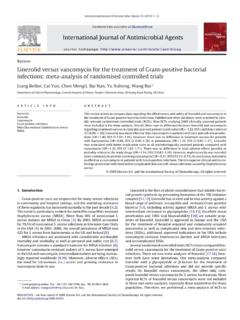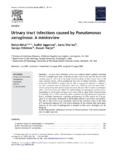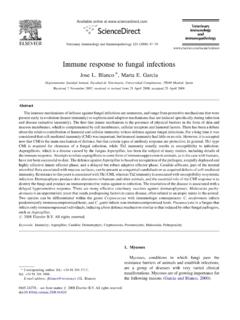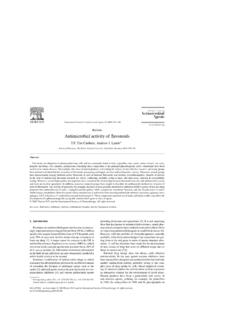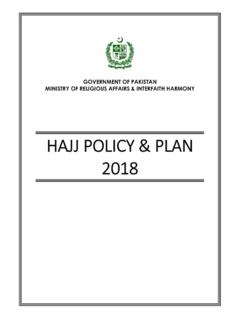Transcription of Hajj: Health lessons for mass gatherings - LOGIN
1 Journal of Infection and Public Health (2008)1, 27 32 REVIEWHajj: Health lessons for mass gatheringsShuja Shafia, ,1, Robert Booyb,c,1, Elizabeth Haworthd,1,Harunor Rashidb,1, Ziad A. Memishe,1aClinical Microbiology and Health Protection Agency Collaborating Laboratory, Northwick Park &St Marks Hospital, North West London Hospitals NHS Trust, Harrow, Middlesex HA1 3UJ, London, UKbAcademic Unit of Child Health , Barts and the London Queen Mary s School of Medicine and Dentistry,London, UKcNational Centre for Immunisation Research and Surveillance of Vaccine Preventable Disease, TheChildren s Hospital at Westmead and The University of Sydney, New South Wales, AustraliadHealth Protection Agency South East, London, UKeDepartments of Medicine, Infection Prevention and Control, King Abdulaziz Medical City,National Guard Health Affairs, Riyadh, Saudi ArabiaReceived 12 August 2008; received in revised form 20 August 2008; accepted 21 August 2008 KEYWORDSHajj; hajj cough.
2 mass gatheringmedicine;Meningococcal disease;Respiratory infectionsAbstractThe potential for spread of infectious diseases associated with mass gath-erings is well recognised. hajj , the unique annual mass gathering of over 2 millionMuslims from all over the world, presents enormous challenges to the authorities inSaudi Arabia. They have a comprehensive programme updated annually, to ensurethat all aspects of hajj rituals are conducted safely and without major inevitable overcrowding in a confined area of such large numbers increasesthe risk of respiratory infections. Of these hajj cough is the most frequentlyreported complaint and is caused by a variety of viruses and bacteria. The out-breaks of meningococcal W135 strains in 2000 and 2001 with the associated highmortality showed the potential for international spread at mass gatherings .
3 Collab-oration between Health policy makers and community leaders in the UK resulted ina rapid and impressive reduction of these disease surveillance and data analysis is necessary to better understandhealth risks and strengthen evidence base for Health policy and prevention. Thebattle against spread of travel-related infections is a shared responsibility. Countriessending pilgrims should co-ordinate preventive measures by healthcare professionalsand community groups. A multi-pronged approach involving awareness programme Corresponding author at: Department of Microbiology and Health Protection Agency Collaborating Laboratory, Northwick Park &St Marks Hospital, North West London Hospitals NHS Trust, Harrow, Middlesex HA1 3UJ, London, Shafi).1On behalf of Health at hajj and Umrah (HAHU) Research $ see front matter 2008 King Saud Bin Abdulaziz University for Health Sciences.
4 Published by Elsevier Ltd. All rights Shafi et pilgrims and their Health advisers, supported by rapid diagnosis, timely treat-ment, prevention by vaccine, community measures, infection prevention and controlpractices are benefits from such measures go beyond the hajj to protect Health and reduceinequalities. Establishing an international centre for public Health relating to the Hajjwill enable co-ordinating international Health action and appropriate intervention. 2008 King Saud Bin Abdulaziz University for Health Sciences. Published by ElsevierLtd. All rights , the pilgrimage to Mecca, Saudi Arabia, is thelargest and most long-standing annual mass gather-ing event on earth. Today, following an exponentialrise in the numbers of non-Saudi pilgrims attendingthe hajj in the last decade (Fig.)
5 1), 2 million peo-ple from over 140 countries assemble annually. Thispresents an enormous challenge to Saudi Arabianauthorities who, as functionaries to the Custodiansof the two Holy Sites (Mecca and Medina), pro-vide extensive, multi-faceted programs to servethese Guests of God . The Saudi state arrangespro bono visas, free Health care services (includ-ing critical care medicine delivery at the hajj sitesthemselves), security services, crowd control andlicensed abattoirs and barbers to ensure that allaspects of the pilgrimage rituals are conductedsafely and without major incident throughout the5 days of hajj . The massive operation exercisedby the Saudi authorities, arguably is no less thanorganising an Olympics every the hajj pilgrimage to Mecca is one ofthe five fundamental pillars of Islam, but requiredonly of those with adequate means and Health .
6 Pilgrimage thereto is a duty men owe to God those who can afford the journey (The Quran3:96 97).020000040000060000080000010000001200 0001400000160000018000009697989900010203 040506 YearsNumber of pilgrimSaudisNon-SaudisFigure 1 Number of pilgrims attending the hajj over thelast decade (source: ).Public Health ImplicationsBefore modernity, journeying to and from the Hajjwas a months-long ordeal with many succumbingalong the way. Modern day air travel has madethe hajj journey safer and faster as the world hasshrunk into a global potential for spread of infectious diseasesassociated with travel has long been recognised[1]. Throughout its 14-century history, hajj hasbeen witness to a series of major Health records document outbreaks of plagueand cholera, involving large numbers of pilgrims,when quarantine was the prime means of control[2].
7 Now the speed of air travel means pilgrimsincubating infectious diseases at their time ofdeparture may not manifest illness until afterarrival in another country thereby facilitatingthe spread of disease and even full blown epi-demics. The risk of pandemic instigation by thismeans is especially concerning and with the Hajjseason determined by the lunar calendar, thedynamism of the event poses unique concerns whenHajj season and influenza season eclipse. Further-more the extreme and inescapable overcrowdingat the hajj facilitates disease acquired thus may be subsequently car-ried to pilgrims countries of origin upon potential for international spread ofinfection was demonstrated recently. In both2000 and 2001, national meningococcal refer-ence laboratories in England and France and theirfield Epidemiology services identified clusters ofmeningococcal cases caused by the hitherto uncom-mon meningococcal serogroup W135.
8 Soon theseclusters were linked to either a history of recentreturn from the hajj or of household contactwith returned pilgrims (Fig. 2)[3]. Globally, morethan 2000 individuals from a score of countrieswere affected; one fifth of the global outbreakpatients had been in Saudi Arabia inside the hajj [4]. Health lessons for mass gatherings291940195019601970198019902000 2010 Meningococcal RespiratoryGastrointestinalParasitic infectionsSkin infectionsVaccine uptakeMiscellaneousMeningococcalW135 OutbreakMe n i n gococcal A OutbreakFigure 2 Summary of publications on infections associated with the hajj (a clearly distinguishable gap of a decade isseen between two meningococcal outbreaks when no research on meningococcal disease was conducted).Working with the communityThe largest cluster of paediatric cases in Europeoccurred in East London[5,6], where eight chil-dren developed meningococcal W135 disease aftera single case of W135 meningococcal infection in anelderly (returned) pilgrim.
9 None of the children hadtravelled to the hajj and only three of them weredirect contacts of pilgrims. The likely explanationwas that adults who had been to the hajj (and onlybeen immunised with A, C polysaccharide meningo-coccal vaccine) had returned as carriers of W135and the organism had spread within their contactsin the local community. This wave of meningococ-cal. W135 infections which resulted in almost 20%mortality directly influenced Health policy in theUK. In response, the Chief Medical Officer in Eng-land launched a high profile campaign to increasehealth awareness about the risk of meningococcalinfection among the Muslim community. Further-more the Saudi consulate under the direction ofthe Saudi Ministry of Health immediately madequadrivalent (ACWY) meningococcal polysaccha-ride vaccine a prerequisite for travel to hajj andUmrah.
10 To augment efforts, government policypartnered quickly with community leaders: work-ing with the Muslim Council of Great Britain, theUK Department of Health has since made relevanthealth information leaflets in different languages,widely available to the British Muslim community,particularly through Mosques[7].With these aggressive measures, the number ofmeningococcal infections and resulting deaths dueto W135 strain were reduced from 45 cases in 2000to just 6 by 2002 with no cases of hajj -associatedW135 meningococcal infections since[8]. The cam-paign proved to be successful directly as a result ofcollaboration between public Health policy makersand community leaders. In contrast recent surveyssuggest that a large number of domestic pilgrimsincluding Health care workers (Saudis and expatri-ates) miss the vaccine[9,10].
